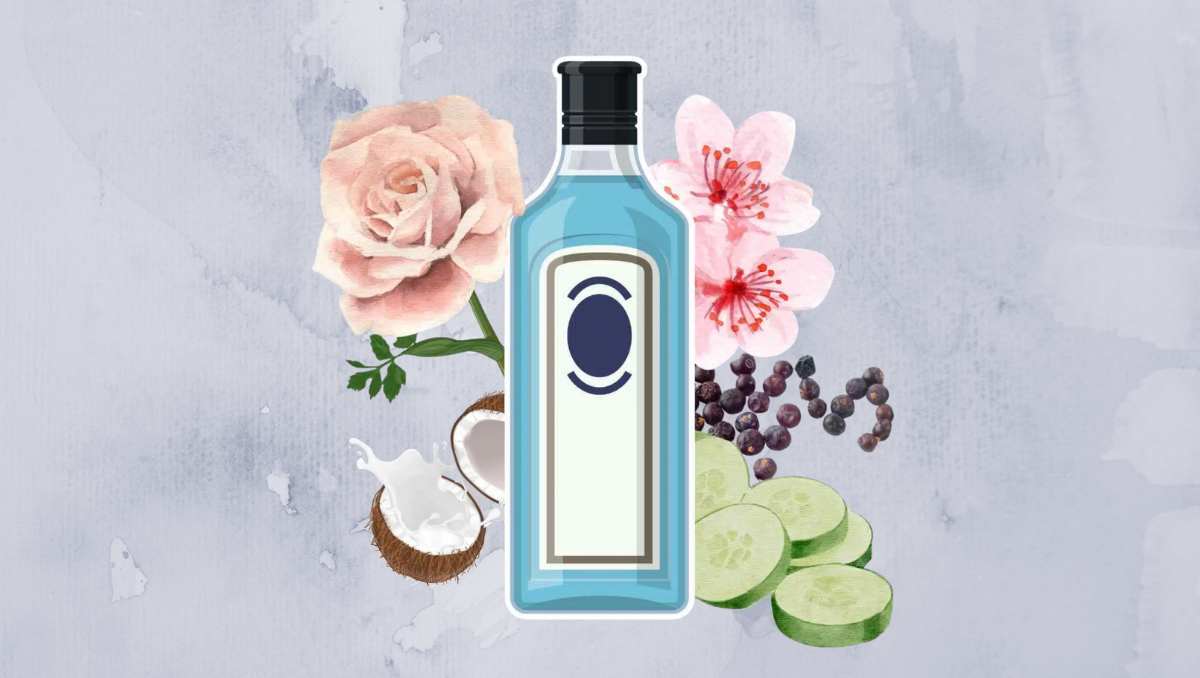In the early 2000s, many new gin brands popped up with innovative ideas, botanicals, and flavor profiles. Unlike classic gin types, e.g., London Dry or Dry Gin, they were significantly less junipery, focussing on creative flavor combinations, with some right on edge to legally pass as gin.
For years, we had no name for this new and upcoming category until the founders of Aviation Gin came up with "New Western Dry Gin" - a loosely defined term invented by Ryan Magarian in 2006.
What does New Western mean?
New Western or New Western Dry tells you that a gin's flavor profile differs from classic offerings. -Meaning, juniper is not, or less dominant. Sometimes these new gins really push the boundaries on the legal definition of gin, which specifically calls for pronounced juniper notes.
Today, you can hear other terms like "Contemporary" or "New Age" more frequently because "Western" implies a geographical origin which can be misleading; -Think, for instance, of Roku Gin produced in Japan.
The trend of tuned-down juniper taste in gin started with big brands like Bombay Sapphire, the rose & cucumber-flavored Hendrick's Gin, and Tanqueray No 10. They all proved that there's a substantial market for less juniper-driven gin, which led to this burst of new and unconventional options.
When Aviation Gin hit the shelves in 2006, there was still no name for this new category. Thus, one of the founders thought up the term "New Western". It was meant as a riff on the popular term "New World" in the wine department, describing wines produced outside the traditional wine-growing areas.
The Difference between London Dry and New Western Dry Gin
It's tricky to draw a line between other Gin types like London Dry and New Western Dry Gin. The reason is that the dominant juniper flavor is nothing we can quantify precisely.
A London Dry Gin has to follow mainly these rules:
- Minimum of 37,5% ABV: The final spirit must have a minimum of 37,5% alcohol.
- Low in sugar: A London Dry must contain less than 0,1 grams of sugar per 1 liter of the final product.
- No color: A classic London Dry can never be colored.
- The juniper flavor must be dominant.
New Western Dry Gins often fulfill requirements 1 - 3. And then it comes down to taste alone. Some remain close to the traditional flavor but add other creative botanicals. So, there's a good chance that a gin is both - New Western and London Dry.
Others are right on the edge of what can legally be considered a gin. Some so far that people compare them to vodka more than gin. In those cases, the distinction between London Dry and New Western is easy to make. Either way, the success of these new-wave brands proves them right.
Why is it so appealing?
Whether you call it New Western Dry, Contemporary, or New Age - these products all benefit from their approachable flavor profile, which has less bite than the classic and strongly junipery London Dry Gins.
They're ideal for people new to gin and offer plenty of opportunities for riffs on classic gin cocktails.
The less strict rules allow producers to develop new and exciting flavorings that often represent local herbs, plants, fruits, and spices. Asian and African-inspired gins, in particular, are on the rise bringing their unique botanicals into the world of bartending and spirits.
Important New Western Dry Gins
The category is full of bottles from big and traditional brands. Hendrick's Gin is probably one of the best-known in the industry. Also, the products of Tanqueray Ten, Roku Gin, Aviation, and Brockmans Gin are big names that dominate the category.
However, besides these big names, a huge variety of lesser-known brands produce these unique and exciting Gins. -Some of them rank among my personal Top 5, like Iron Balls or Bobby's Gin.
Cocktails made with New Western Dry Gin
The best way to appreciate the delicate flavors in these spirits is by drinking them neat. If you want ice, add large, clear cubes to reduce dilution. Once you know the flavors in the respective gin, you can craft creative riffs on classic cocktail recipes.
The strongly notable differences in taste lead to many new possibilities. However, keep the basic rules in mind. -So, for instance, if you want to stir up a bone-dry Martini, an overly fruity Gin might not be the ideal option.
In other cases, fruity flavor profiles can also be highly beneficial. Brockman's, for example, is a strongly berry-forward Gin that works perfectly in a Bramble cocktail. Iron Balls, made from pineapple and coconut wine, is an excellent way to bring tropical flavors into classics like a Negroni. If the taste is still too traditional, try using it in our Coconut Negroni recipe.
The classic Gin and Tonic is another way to highlight the unique flavors in Contemporary Gin offerings. In most cases, I prefer to combine these Gins with Fever-Tree Mediterranean tonic water. Its subtle and only slightly bitter taste with hints of herbal flavors is a perfect match for unconventional and fruity Gins.
Final Note
The definition of New Western Dry Gin is relatively vague. Once you know how the taste differs from classic Dry and London Dry Gins, you get a better understanding of this new "Contemporary" category.
To me, first and foremost, it's an exciting sub-category that offers plenty of opportunities to create new craft cocktail recipes and bring local flavors from all over the world into classic drinks.

